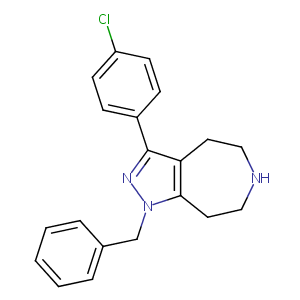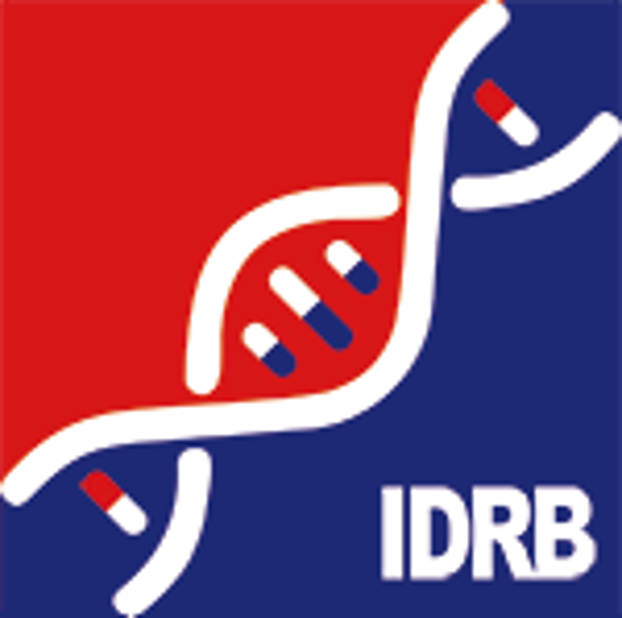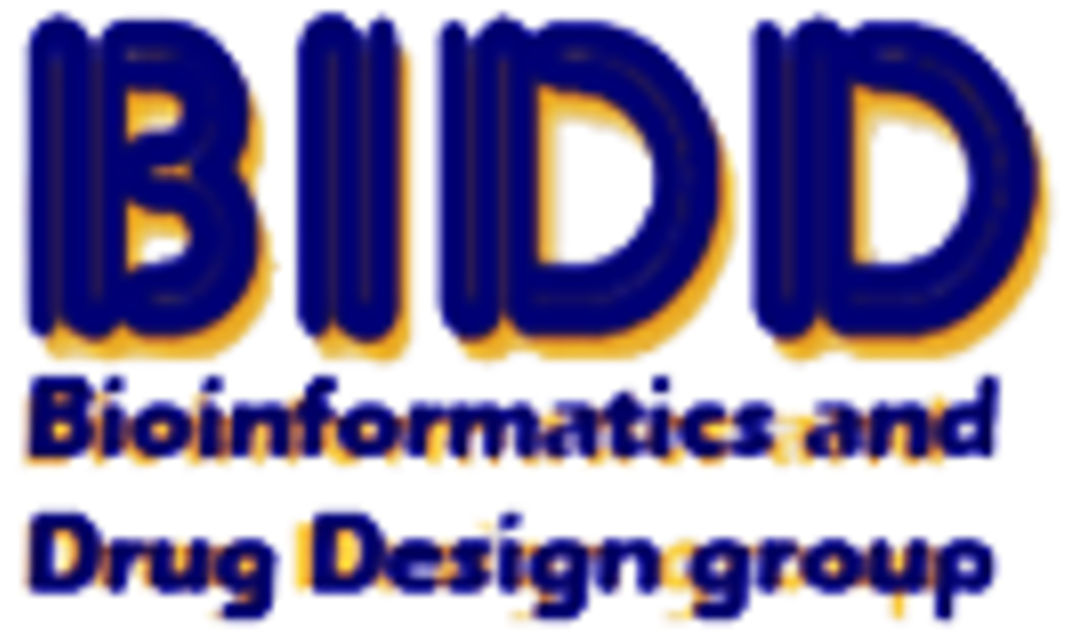Drug Information
| Drug General Information | |||||
|---|---|---|---|---|---|
| Drug ID |
D0T8KA
|
||||
| Former ID |
DIB013068
|
||||
| Drug Name |
JNJ-18038683
|
||||
| Synonyms |
Serotonin 7 antagonist (depression), Johnson & Johnson; 5-HT 7 antagonist (depression), Johnson & Johnson
|
||||
| Drug Type |
Small molecular drug
|
||||
| Indication | Major depressive disorder [ICD9: 296.2, 296.3, 710.0; ICD10:F32, F33, M32] | Phase 2 | [1], [2] | ||
| Company |
Johnson & Johnson
|
||||
| Structure |

|
Download2D MOL |
|||
| Formula |
C20H20ClN3
|
||||
| InChI |
InChI=1S/C20H20ClN3/c21-17-8-6-16(7-9-17)20-18-10-12-22-13-11-19(18)24(23-20)14-15-4-2-1-3-5-15/h1-9,22H,10-14H2
|
||||
| InChIKey |
UKJPMZGILXATGT-UHFFFAOYSA-N
|
||||
| PubChem Compound ID | |||||
| PubChem Substance ID | |||||
| Target and Pathway | |||||
| Target(s) | 5-hydroxytryptamine 7 receptor | Target Info | Antagonist | [3] | |
| KEGG Pathway | Ras signaling pathway | ||||
| Calcium signaling pathway | |||||
| Neuroactive ligand-receptor interaction | |||||
| Serotonergic synapse | |||||
| PANTHER Pathway | Heterotrimeric G-protein signaling pathway-Gi alpha and Gs alpha mediated pathway | ||||
| PathWhiz Pathway | Excitatory Neural Signalling Through 5-HTR 7 and Serotonin | ||||
| Reactome | Serotonin receptors | ||||
| G alpha (s) signalling events | |||||
| WikiPathways | Serotonin Receptor 4/6/7 and NR3C Signaling | ||||
| Monoamine GPCRs | |||||
| GPCRs, Class A Rhodopsin-like | |||||
| GPCR ligand binding | |||||
| GPCR downstream signaling | |||||
| GPCRs, Other | |||||
| References | |||||
| REF 1 | ClinicalTrials.gov (NCT00566202) A Safety and Effectiveness Study of JNJ-18038683 in Patients With Moderate to Severe Depression. U.S. National Institutes of Health. | ||||
| REF 2 | (http://www.guidetopharmacology.org/) Nucleic Acids Res. 2015 Oct 12. pii: gkv1037. The IUPHAR/BPS Guide to PHARMACOLOGY in 2016: towards curated quantitative interactions between 1300 protein targets and 6000 ligands. (Ligand id: 8432). | ||||
| REF 3 | Selective pharmacological blockade of the 5-HT7 receptor attenuates light and 8-OH-DPAT induced phase shifts of mouse circadian wheel running activity. Front Behav Neurosci. 2015 Jan 15;8:453. | ||||
If You Find Any Error in Data or Bug in Web Service, Please Kindly Report It to Dr. Zhou and Dr. Zhang.

